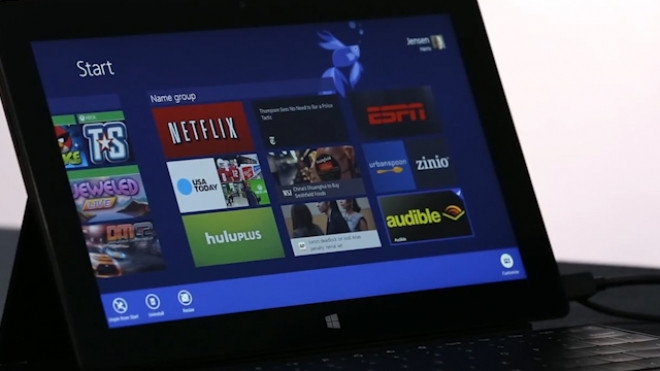Microsoft Ready to Scrap Windows 8 and Embrace Windows 9

Having failed to ignite the PC market, Microsoft will scrap Windows 8 and start all over again with Windows 9 in April according to sources within the company.
Currently codenamed Threshold, the new version of Windows will look to address the many issues users had with Windows 8 and last year's update Windows 8.1.
According to sources who spoke to Paul Thurrot, a well-known Microsoft watcher with a track record of breaking stories about the software giant, the next version of the popular operating system is likely to be known as Windows 9 – though details about how much of an overhaul it will get are still thin on the ground.
Microsoft is likely to outline its vision for the updated operating system at its annual Build developers conference taking place this April where it is also epxected to launch Windows Phone 8.1.
Bridging the divide
Windows 8 was officially released at the end of October 2012, and while it was lauded by some in the industry for its new direction in attempting to bridge the divide between mobile and desktop computing, many users reacted negatively to the radical new look for Windows.
As well as announcing a new-look operating system, the company moved to an annual update cycle for its desktop software, and in October 2013 we duely got Windows 8.1, which brought a number of major changes, including the return of the Start button in desktop mode.
The launch of the radical new look for Windows has coincided with the worst period in the PC industry's history, which has recorded six straight quarters of negative growth, with research firm Gartner predicting that slump is likely to continue into 2014.
Reignite
It had been hoped that Windows 8 would reignite the industry, which is struggling to compete with tablets - and even smartphones - running Apple's or Google's mobile operating systems.
Windows RT, the version of Windows 8 designed specifically to run on mobile devices, has been widely shunned by the top tablet manufacturers, who are instead releasing tablets and hybrid tablet-PCs running full versions of Windows 8.
Microsoft's Surface 2 and Nokia's 2520 tablet are the only major devices currently running the RT version of Windows.
Microsoft has hinted that it might be considering building a new hybrid OS using both Windows Phone and Windows RT.
Wholesale change
So with Windows 8 failing to win people over, it looks like Microsoft will try to go again and rebrand Windows once more:
"To distance itself from the Windows 8 debacle, Microsoft is currently planning to drop the Windows 8 name, and brand this next release as Windows 9. That could change, but that's the current thinking," writes Thurrot.
"Threshold needs to strike a better balance between meeting the needs of over a billion traditional PC users while enticing users to adopt this new Windows on new types of personal computing devices. In short, it needs to be everything that Windows 8 is not," Thurrot states.
According to Thurrot's sources, the Start menu will be back in Windows 9, together with the ability to run Metro-style apps on the desktop alongside desktop applications.
But what was it about Windows 8 that people don't like?
Trying to bridge the gap between tablets and traditional desktop PCs, Windows 8 was a stark change from the traditional Windows environment that many consumers were used to – and it seems as if that change was just too much, too quickly.
Numerous complaints about the new features can be seen across the web. There seems to be a great dislike of the Metro start screen, from the way it animates, to the tiles and how they are arranged.
While users have moaned about the fact that Metro apps launch in full screen, the biggest complaints are about the disappearance of the Start Menu in the desktop mode, making it difficult for some users to locate programs they want to use.
Although Windows 8.1 has brought the Start button back, the menu is still very different to what users are used to.
There are also a great deal of complaints about features that could be turned off by changing settings in Windows 8, only the settings menus are often so well-hidden that users don't know where to look.
Settings that users would really love to turn off include:
- Lock Screen - A lock screen that requires either your Skydrive password or a Windows user account password to login
- Floating Toolbar - A toolbar that automatically adjusts in the desktop mode
- Hot Corners - A feature giving users quick access to the Metro start screen and currently running Metro apps when they hover the mouse over the edge of the screen
There are also some settings where the user starts off in the Control Panel on the desktop mode, but ends up in the Metro screen changing even more settings, before the change is complete, for example, when adding new user accounts and administration privileges.
Windows 8.1 has also been criticised, with complaints from many users warning others not to install the update as it allegedly slows the PC down and hogs battery life worse than Windows 8, but this varies from one configuration to the next.
© Copyright IBTimes 2025. All rights reserved.






















